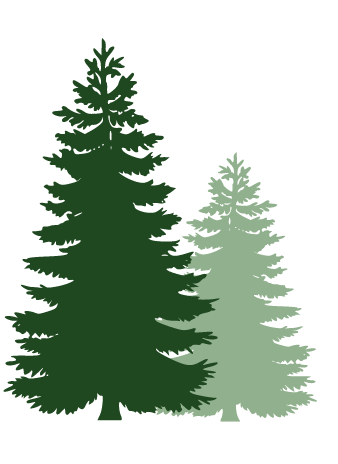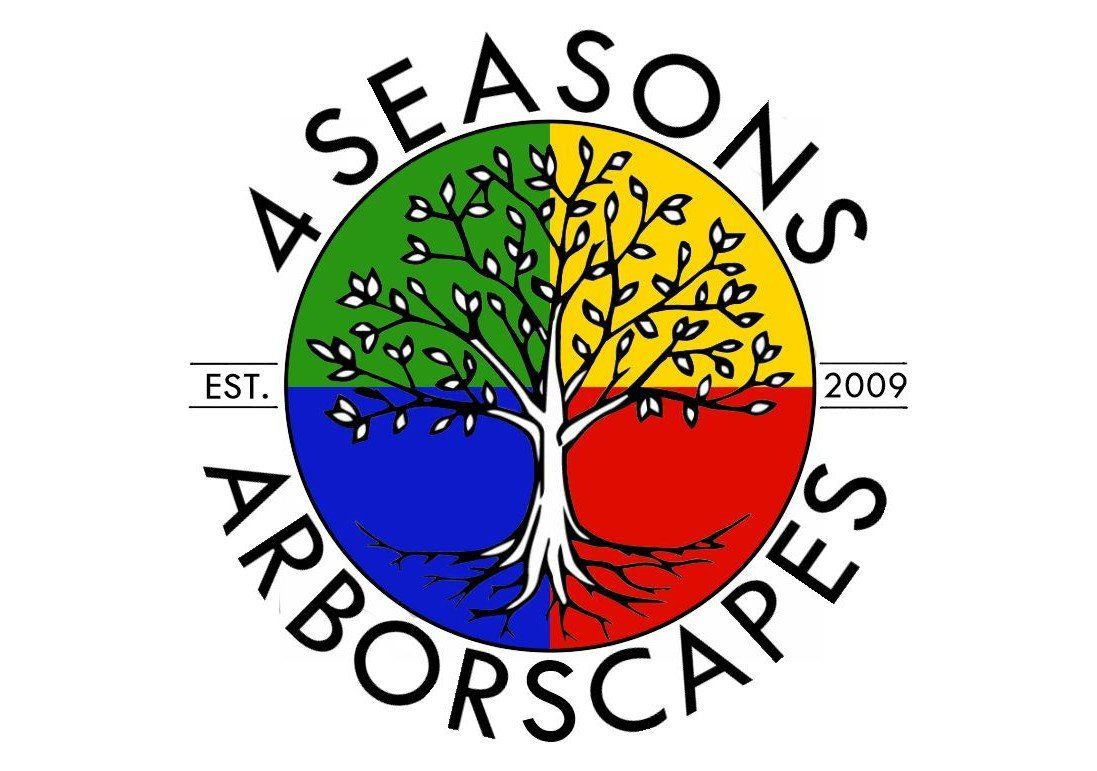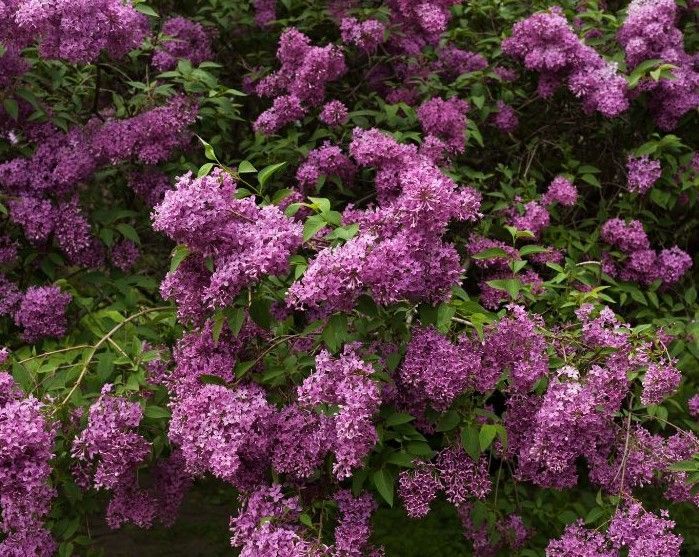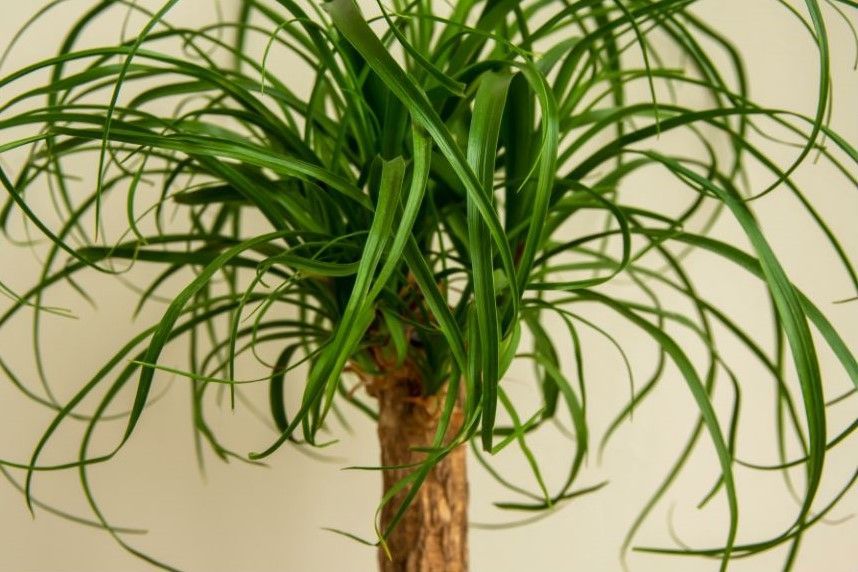The Most Popular Trees for Privacy and Screening
Planting trees for privacy and screening offers numerous benefits, making it a popular choice for homeowners and landscapers alike. Here are some reasons why planting trees for privacy is advantageous:
Natural barrier. Trees create a natural barrier that helps block unwanted views, noise, and distractions from neighboring properties, roads, or public spaces.
Visual appeal. Trees add beauty and visual interest to outdoor spaces, enhancing the overall aesthetic appeal of your property.
Year-round privacy. Evergreen trees provide year-round privacy and screening, even during the winter months when deciduous trees may lose their leaves.
Increased property value. Well-designed landscaping, including trees for privacy, can increase the value of your property by improving curb appeal and creating a more attractive outdoor living space.
Shade and comfort. Trees provide shade and shelter, creating a more comfortable and enjoyable outdoor environment for relaxation, recreation, and entertaining.
Wildlife habitat. Trees attract birds, butterflies, and other wildlife, enriching the ecosystem and bringing nature closer to home.
Windbreaks. Trees planted for privacy can also serve as windbreaks, reducing wind speeds and protecting your property from strong gusts.
Privacy without isolation. Trees offer privacy without isolating you from the surrounding community. They provide a sense of seclusion while still allowing you to feel connected to your neighborhood.
Environmental benefits. Trees help purify the air, absorb carbon dioxide, and release oxygen, contributing to a healthier and more sustainable environment.
Personal well-being. Being surrounded by greenery and natural beauty has been shown to reduce stress, improve mood, and enhance overall well-being.
When it comes to creating privacy and screening in your outdoor space, selecting the right trees is crucial. Here are some popular trees known for their effectiveness in providing privacy due to their height, density, and foliage characteristics.
1. Thuja Green Giant (Thuja standishii x plicata)
Thuja Green Giant is renowned for several standout qualities that make it an exceptional choice for privacy and screening in landscaping. One of its most impressive features is its rapid growth rate, capable of reaching heights of 3 to 5 feet per year under optimal conditions. This vigorous growth quickly establishes a dense barrier, ideal for providing privacy and screening.
Adding to its appeal is the dense foliage of Thuja Green Giant, characterized by vibrant green, scale-like leaves. This lush foliage ensures excellent coverage year-round, maintaining privacy and screening even during the winter months. Its columnar growth habit further enhances its suitability for tall hedges and screens, with mature heights ranging from 20 to 40 feet.
Despite its rapid growth, Thuja Green Giant is surprisingly low-maintenance once established. Minimal pruning is needed to retain its desired shape and height, and it demonstrates tolerance to various soil types and environmental conditions. This adaptability extends its utility to a wide range of climates and regions, thriving in USDA zones 5 to 9.
In addition to its practical benefits, Thuja Green Giant contributes to the ecological richness of outdoor spaces. Its dense foliage serves as a habitat and shelter for wildlife, attracting birds for nesting and foraging. Furthermore, it offers long-term privacy solutions, with a lifespan spanning several decades when properly cared for.
2. Eastern Red Cedar (Juniperus virginiana)
The Eastern Red Cedar, renowned for its attractive and aromatic foliage, stands out as a versatile choice for privacy screens. This coniferous tree thrives in a variety of conditions, particularly excelling in dry and poor soils.
One of its notable features is its dense foliage, composed of scale-like leaves that ensure excellent coverage and screening throughout the year. Coupled with its fast growth rate, especially in its early years, the Eastern Red Cedar quickly establishes itself as an effective privacy solution within a relatively short time frame.
Moreover, property owners appreciate its tolerance of pruning, allowing for control over its size and shape to meet specific privacy needs. This adaptability extends to its ability to thrive in various soil types and environmental conditions, making it suitable for a wide range of locations and climates.
Standing tall at heights of 40-50 feet or more, the Eastern Red Cedar offers effective privacy screening even in taller landscape settings. Its relatively narrow growth habit makes it ideal for smaller spaces or along property boundaries where space is limited.
Beyond its practical benefits, the Eastern Red Cedar adds aesthetic value to landscapes with its attractive foliage, conical or columnar shape, and occasional bluish berries. Furthermore, it serves as a habitat and food source for various wildlife species, contributing to biodiversity and ecological balance.
Once established, the Eastern Red Cedar requires minimal maintenance, making it an ideal choice for property owners seeking a low-maintenance privacy solution.
3. Leyland Cypress (Cupressocyparis leylandii)
Leyland Cypress (× Cupressocyparis leylandii), a fast-growing and evergreen species, is highly favored for its ability to swiftly create tall and dense hedges. Featuring fine-textured foliage, Leyland Cypress can be pruned to achieve the desired height and shape, making it a versatile choice for privacy screening.
One of its most notable attributes is its rapid growth rate. Leyland Cypress trees are renowned for their ability to grow at an impressive pace, typically reaching heights of 3 to 4 feet per year when provided with proper care. This rapid growth facilitates the creation of privacy screens relatively quickly. In optimal conditions, Leyland Cypress trees can grow quite tall and wide, reaching heights of 60 to 70 feet with a spread of 15 to 25 feet. This substantial size makes them particularly effective for creating tall privacy screens or hedges.
The foliage of Leyland Cypress trees is dense and lush, comprising small, scale-like leaves arranged in flattened sprays. This dense foliage provides excellent coverage for privacy, forming a thick barrier that effectively blocks views and reduces noise pollution.
When planting Leyland Cypress trees for screening purposes, spacing is crucial to achieve the desired density. Planting the trees approximately 5 to 6 feet apart allows them to grow together and form a seamless barrier for privacy.
Leyland Cypress trees thrive in full sun but can also tolerate partial shade. Adequate sunlight, preferably 6 to 8 hours per day, is essential for ensuring healthy growth and dense foliage.
While relatively low-maintenance, Leyland Cypress trees may require periodic pruning to maintain their shape and density. Regular watering, especially during dry spells, is crucial for newly planted trees, as they prefer well-drained soil but can adapt to various soil types.
Additionally, Leyland Cypress trees can serve as effective windbreaks, thanks to their dense foliage, which helps block wind and create a more sheltered environment.
However, it's important to monitor the trees for common issues such as cypress canker, root rot, spider mites, and bagworms. Promptly addressing any signs of disease or infestation helps protect the health of the trees and ensures their effectiveness as privacy screens.
4. Emerald Green Arborvitae (Thuja occidentalis 'Emerald Green')
Emerald Green Arborvitae trees are prized for their striking appearance, characterized by dense, lush foliage with vibrant emerald green hues. The foliage, comprised of scale-like leaves arranged in flattened sprays, imparts a soft and feathery texture to the tree's overall aesthetic. Maintaining a compact, pyramidal shape, these trees typically require minimal pruning to retain their form.
In terms of size, Emerald Green Arborvitae trees typically reach heights of 10 to 15 feet with a spread of 3 to 4 feet at maturity. Their narrow growth habit makes them ideal for tight spaces and planting in rows to create effective screening barriers.
Though not as rapid as Leyland cypress, Emerald Green Arborvitae trees exhibit a moderate growth rate, adding approximately 6 to 9 inches of growth per year under optimal conditions. Within a few years of planting, they can establish a solid privacy screen, particularly when spaced about 2 to 3 feet apart to encourage dense growth and coverage.
These trees thrive in full sun to partial shade, necessitating at least 6 hours of direct sunlight per day for optimal growth and foliage density. While preferring well-drained soil, they can tolerate various soil types and exhibit relative drought tolerance once established.
Minimal pruning beyond occasional shaping is typically required for Emerald Green Arborvitae trees. Removing dead, damaged, or diseased branches and thinning out interior foliage help improve air circulation and sunlight penetration, promoting overall tree health.
Although generally resilient, Emerald Green Arborvitae trees may be susceptible to pests and diseases such as spider mites, bagworms, and root rot. Regular monitoring for signs of infestation or disease is advisable, along with appropriate measures for control and prevention.
In regions with harsh winters or heavy snowfall, providing winter protection for Emerald Green Arborvitae trees is recommended to prevent damage from snow and ice accumulation. Utilizing burlap wraps or anti-desiccant sprays can shield the foliage and reduce stress on the trees during winter months.
5. Cryptomeria (Cryptomeria japonica)
Cryptomeria, also known as Japanese cedar, is an evergreen tree prized for its attractive, soft needles. While it's considered a slower-growing option compared to some other privacy trees, Cryptomeria can achieve significant heights over time, making it a valuable addition to any landscape.
These trees present a tall and graceful silhouette, boasting a conical to pyramidal shape adorned with soft, feathery foliage. The flattened needles spiral around the branches, transitioning from bright green in spring and summer to bronze or reddish-brown in fall and winter, thus adding seasonal interest to the surroundings.
Depending on the variety and growing conditions, Cryptomeria trees can grow impressively tall, often exceeding 50 to 70 feet at maturity, with a spread of 20 to 30 feet. This substantial size renders them effective for creating tall privacy screens and windbreaks. Cryptomeria trees boast a moderate to fast growth rate, typically adding 1 to 3 feet of growth per year under optimal conditions.
When planting Cryptomeria trees for screening purposes, spacing them about 8 to 10 feet apart allows for ample growth and coverage, ensuring the development of a dense and effective privacy barrier.
These trees thrive in full sun to partial shade, requiring at least 6 to 8 hours of direct sunlight per day for optimal growth and foliage density. While they can tolerate some shade, their density may decrease in shady conditions.
Cryptomeria trees prefer well-drained, slightly acidic soil but can adapt to various soil types. Regular watering, especially during dry spells or periods of drought, helps newly planted trees establish roots, although once established, they exhibit relatively high drought tolerance.
Minimal pruning beyond occasional shaping is necessary for Cryptomeria trees to maintain their desired form. Removal of dead, damaged, or congested branches, along with thinning out interior foliage, improves air circulation and sunlight penetration.
Although generally resistant to pests and diseases, Cryptomeria trees may occasionally encounter issues such as aphids, spider mites, or root rot in poorly drained soils. Regular monitoring and appropriate measures for control and prevention are advisable.
Cryptomeria trees are typically hardy in USDA hardiness zones 6 to 9, although specific cultivars may have different cold tolerance levels. In colder regions, selecting cold-hardy cultivars or providing winter protection, such as mulching around the base of the tree, can help insulate the roots and protect against frost damage.
6. Italian Cypress (Cupressus sempervirens)
Italian Cypress stands tall and slender, offering a classic choice for vertical privacy screens, especially suitable for Mediterranean or formal garden designs. These trees are distinguished by their tall, narrow columnar shape, capable of reaching heights of 40 to 60 feet or more at maturity. Their dense, dark green foliage, composed of scale-like leaves arranged in flattened sprays, contributes to their distinctive and striking appearance.
Due to their vertical growth habit, Italian cypress trees require less horizontal space compared to other screening trees. When planting for screening and privacy, spacing them about 4 to 6 feet apart allows for ample vertical growth while still forming a dense barrier.
Italian cypress trees boast a moderate growth rate, adding about 1 to 2 feet of growth per year under optimal conditions. Despite not being as fast-growing as some other screening trees, they establish privacy screens relatively quickly and demand minimal maintenance once established.
Thriving in full sun and well-drained soil, Italian cypress trees prefer locations receiving at least 6 to 8 hours of direct sunlight per day for optimal growth and foliage density. While they can tolerate some shade, their density may decrease in shady conditions.
Preferably planted in well-drained soil, Italian cypress trees exhibit drought tolerance once established. Regular watering aids in root establishment for newly planted trees, with supplemental watering recommended during dry spells, while overwatering should be avoided to prevent root rot.
Minimal pruning beyond occasional shaping is required to maintain the desired form of Italian cypress trees. Pruning should focus on removing dead, damaged, or congested branches, along with thinning out the interior foliage to enhance air circulation and sunlight penetration, ideally conducted in late winter or early spring.
While generally resistant to pests and diseases, Italian cypress trees may occasionally encounter issues such as spider mites, aphids, or canker diseases. Regular monitoring for signs of infestation or disease enables appropriate measures for control and prevention.
Italian cypress trees are well-suited for windy conditions, serving as effective windbreaks in addition to privacy screens. Their dense foliage acts as a buffer against wind, reducing its impact on nearby areas and creating a more sheltered environment.
7. Nellie Stevens Holly (Ilex 'Nellie R. Stevens')
Nellie R. Stevens holly, an evergreen shrub renowned for its versatility, can be pruned into a dense, upright hedge, boasting glossy, dark green leaves and ornamental berries. These large, broadleaf evergreens exhibit a pyramidal to conical growth habit, providing year-round interest and dense coverage. Female trees further enhance their visual appeal by producing bright red berries in fall and winter.
At maturity, Nellie R. Stevens holly trees typically reach heights of 15 to 25 feet with a spread of 10 to 15 feet, making them suitable for medium to tall privacy screens and hedges. Their moderate to fast growth rate, adding about 1 to 2 feet of growth per year under optimal conditions, facilitates relatively quick establishment and responsiveness to regular pruning.
For screening purposes, spacing Nellie R. Stevens holly trees about 5 to 8 feet apart allows for ample growth and coverage, fostering denser privacy screens more quickly. While preferring full sun to partial shade, they can tolerate various soil types and exhibit drought tolerance once established.
Minimal pruning beyond occasional shaping is necessary to maintain the desired form of Nellie R. Stevens holly trees, with late winter or early spring being the ideal time for pruning before new growth begins. Despite being generally resistant to pests and diseases, regular monitoring for signs of infestation or disease enables timely intervention and prevention measures.
The bright red berries produced by female Nellie R. Stevens holly trees not only add ornamental value but also attract birds to the landscape. To ensure berry production, it's essential to have both male and female trees present for pollination.
8. American Arborvitae (Thuja occidentalis)
American Arborvitae, known for its hardiness and adaptability, stands as a versatile evergreen tree ideal for creating privacy when planted in rows. Native to North America, it showcases dense, scale-like foliage ranging from dark green to yellow-green, boasting a narrow, columnar shape with heights reaching 20 to 40 feet and spreads spanning 10 to 15 feet.
The dense foliage of American Arborvitae is a standout feature, forming a thick barrier that ensures privacy while blocking undesirable views, noise, and wind. Although not as rapid as some other screening plants, its growth rate of 1 to 2 feet per year under optimal conditions facilitates relatively quick results, establishing screening hedges or barriers within a few years.
Adaptability is another strength of the American Arborvitae, thriving in varied growing conditions from full sun to partial shade and tolerating a range of soil types and pH levels. Its resilience extends to urban pollution and deer browsing, making it suitable for diverse landscapes.
Low maintenance requirements further enhance its appeal for screening purposes, with established trees showcasing drought tolerance and needing minimal pruning or shaping. Occasional pruning, preferably in late winter or early spring, ensures maintenance of its columnar form by removing dead, damaged, or overgrown branches.
Several varieties of American Arborvitae offer options tailored to specific preferences and space requirements, such as the compact 'Emerald Green', fast-growing 'Green Giant', and 'Nigra' with its dark green foliage and narrow, pyramidal shape.
While American Arborvitae presents numerous benefits for screening, there are potential drawbacks to consider, including susceptibility to pests and diseases like bagworms, spider mites, and cedar apple rust. Additionally, precautions should be taken against damage from heavy snow or ice accumulation during winter storms.
Conclusion
Planting trees for privacy and screening is a practical and aesthetically pleasing way to enhance your outdoor living space, by embracing trees for privacy and screening, we not only create havens of peace and tranquility for ourselves but also contribute to the health and beauty of the natural world around us. Before choosing any tree for privacy, consider factors such as the climate in your area, available space, and desired height of the screen. Additionally, check with local nurseries or arborists to ensure that the selected tree species is well-suited for your specific conditions. Proper planting, watering, and maintenance will contribute to the success of your privacy screen.

Sign up for monthly newsletters!
From easy tree care practices to fun DIY projects, we've got something for everyone.

Interested in what we can do for you?
Call us at 610-648-0404 or book an appointment online.

Sign up for monthly newsletters!
Get our latest articles, delivered right to your inbox. No spam, ever.
Check out the latest...
Sign up for monthly newsletters!
From easy tree care practices to fun DIY projects, we've got something for everyone.






WHAT WE DO
WHO WE ARE
Join the Tree Society newsletter
Get monthly articles on the latest in the tree care industry, curated by people deeply passionate about environmental stewardship.



